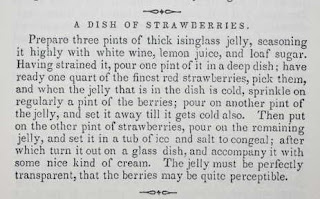 On Good Friday, I was at Westfield, in the Lockhart house. I had a bunch of jars with natural egg dyes, making pretty coloured eggs. It takes much more time to dye an egg with nature dyes than it does with food colours. The results were pretty, albeit more pastel than I'd have liked. If it weren't for the ice storm and the lack of power, I could have started a few batches a day earlier and had spectacular results to show off. Maybe if I get to do this activity next year, I can plan ahead enough for a before and after display, which would be very informative, not to mention awesome.
On Good Friday, I was at Westfield, in the Lockhart house. I had a bunch of jars with natural egg dyes, making pretty coloured eggs. It takes much more time to dye an egg with nature dyes than it does with food colours. The results were pretty, albeit more pastel than I'd have liked. If it weren't for the ice storm and the lack of power, I could have started a few batches a day earlier and had spectacular results to show off. Maybe if I get to do this activity next year, I can plan ahead enough for a before and after display, which would be very informative, not to mention awesome.Because we had no power when I left home, I grabbed a roast from the freezer and some potatoes, carrots and parsnips. I tossed them in my dutch oven and slow cooked them by the fire all day! It was a pretty decent meal, considering I'd forgotten to bring any seasonings with me. I've always appreciated that we can do this while we interpret. Plus everyone was commenting on how delicious the building smelled when the walked in! It made lots of people smile.
Blue Faced Leicester superwash yarn. By the extra lustre, I'm going to guess that there is some nylon in this blend. It was mill ends- super cheap mill ends, which require a bit of picking of short, cut bits and a very occasional bit of hand processing, but there is minimal loss and it spins up beautifully. I don't know what I'm going to use it for yet. I've spun up about 800 yards so far. It is an easy spin and can keep it consistent when I'm chatting or otherwise preoccupied so spinning a lot of it, is fun and relaxing.

I'm working on some green right now. I don't know if there is any nylon in this BFL superwash mill end. I wouldn't normally be attracted to this lurid green colour, however it looks quite intriguing when side by side with that purple-reddish colour. I think they would be very fun socks. I am hoping that I have enough fibre to spin yarn for knee socks, but that is probably pushing it. I only have about 120 gm of the green and a little bit more of the purple. There may be a bit more stashed away, but in making room for the kitchen reno, everything has been piling up in the fibre storage area, and it's a bit hard to get to it right now. Since I've found not 1, not 2, not 3 but 4 pair of started and not finished socks, making a pair of knee socks in the near future is a moot point anyway. I am out of sock knitting needles until some of the above pair are finished. As an aside, I really didn't realize that I had that many sets of knitting needles in 2.25mm.























